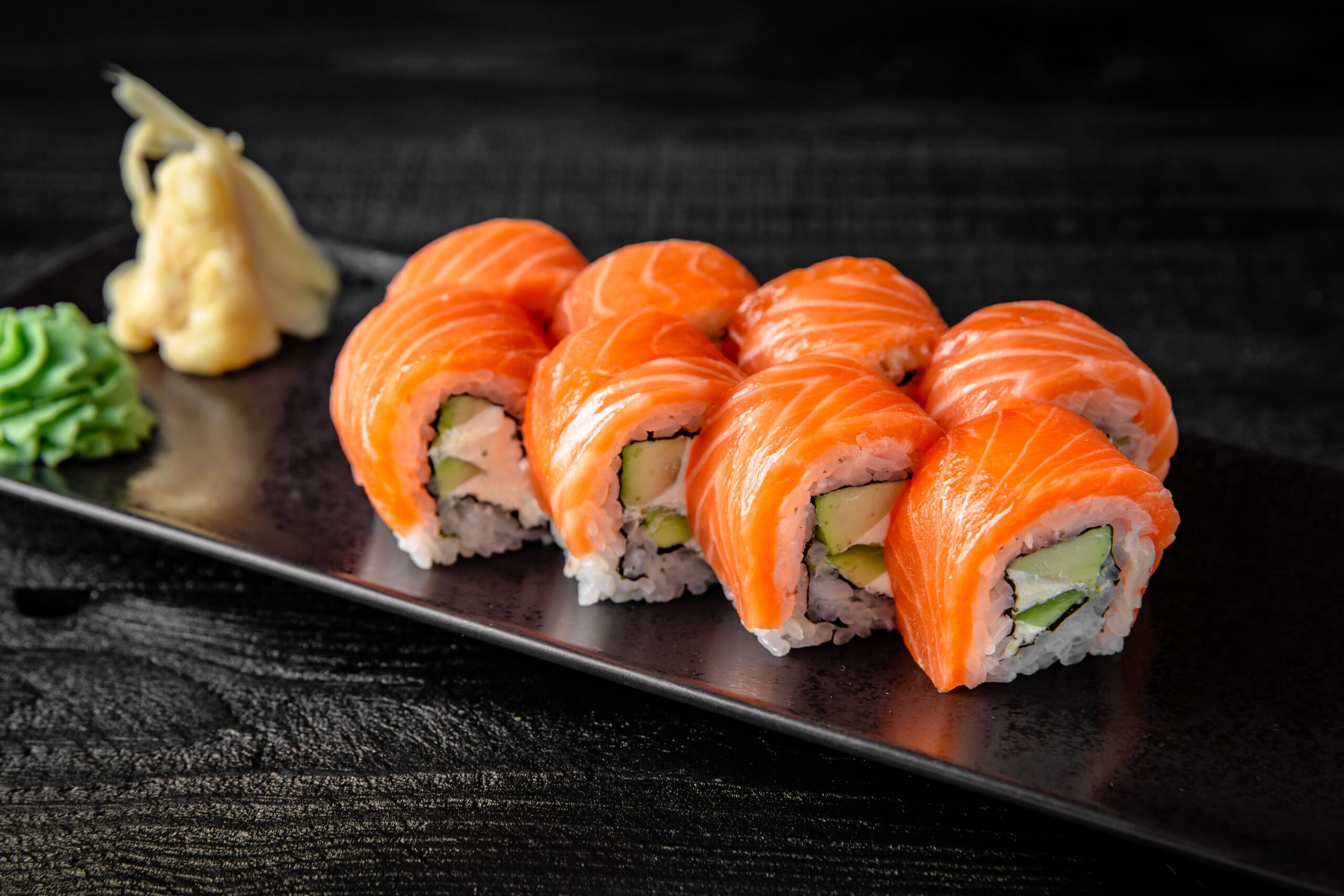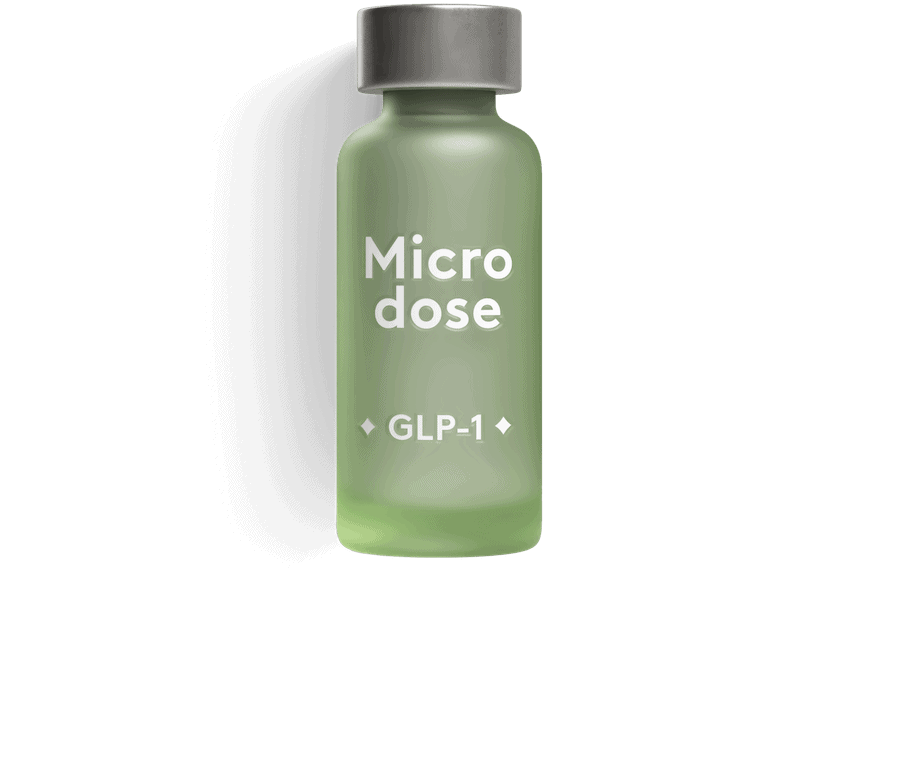Sushi can absolutely fit into a healthy weight-loss plan—especially when you choose simple rolls made with fish and plenty of veggies. But not all sushi is automatically low in calories. A basic tuna roll might have around 180 to 200 calories, while a specialty roll (like a dragon roll) can climb past 450 calories for the same number of pieces.
Technically, “sushi” refers to vinegared rice paired with ingredients like raw or cooked fish, vegetables, or egg. Depending on the type, it might be wrapped in nori (paper-thin seaweed) or served without. It began as a quick roadside snack in Japan, but over time, sushi has evolved into more elaborate creations—some featuring rich sauces, fried elements, and creamy fillings that can quickly raise the calorie count. And those bite-sized pieces? They can add up faster than you think when you’re enjoying them with friends.
So, can sushi support weight loss? Absolutely. With a few smart swaps, mindful ordering, and balanced sides, you can savor your favorite rolls while staying aligned with your goals.
✅ Quick answer
Yes—sushi can be a smart choice for weight loss, as long as you choose wisely. Lean protein from fish and nutrient-rich veggies make it filling and satisfying, while high-calorie specialty rolls (think tempura or mayo-heavy sauces) can quickly tip the balance.
🚀 Weight-loss benefits of sushi
- It’s a great source of lean protein – Fish like tuna and salmon are packed with protein, which helps you feel full and satisfied after eating. Protein also supports muscle maintenance—a key part of a healthy metabolism—and can slightly boost calorie burn because it takes more energy to digest.
- It’s rich in healthy omega-3 fats – Fatty fish used in sushi provide omega-3s like EPA and DHA, which help fight inflammation, support heart health, and may even improve body composition. These healthy fats nourish your body at a cellular level and support long-term well-being—inside and out.
- It’s full of nutrient-dense extras – Beyond the fish, sushi often includes nutrient-packed ingredients like nori (seaweed), ginger, and wasabi. Nori is a natural source of iodine, which supports thyroid function and metabolism. Ginger and wasabi add more than flavor—they also deliver antioxidants and compounds that can aid digestion and help reduce inflammation.
⚠️What to watch out for
- Look for clues that signal extra fat or calories – When you’re reading the menu, watch for words like tempura, crispy, fried, crunchy, creamy, spicy, aioli, mayo, dynamite, volcano, or eel sauce—they usually mean the roll includes added oil, sugar, or fat.
- Specialty rolls can be surprisingly calorie-dense – A basic tuna roll might stay around 200 calories, but many specialty rolls pack much more. That’s because they often layer on multiple sauces, fried toppings, and rich fillings—think tempura shrimp, avocado, spicy mayo, unagi sauce, and even cream cheese, all in one roll. These extras make for a delicious bite but can quickly double or triple the calorie count.
- Sushi can be high in sodium – Many rolls come with soy-based marinades, pickled veggies, or sauces like teriyaki and ponzu that add extra salt. Dipping in soy sauce adds even more—just one tablespoon contains about 900 mg of sodium, which can lead to water retention and bloating.
Sushi: The core ingredients
Sushi typically contains the following ingredients:
- Fish: Fish is the foundation of many sushi options (though not all) and a great source of lean, high-quality protein, which helps preserve muscle mass and keep you feeling full. Fatty fish like salmon and tuna also deliver omega-3 fatty acids, which support heart health, reduce inflammation, and may even help curb appetite. Other proteins like egg (tamago), tofu, shrimp, or crab offer variety and additional nutrients.
- Rice: Sushi rice is seasoned with vinegar, sugar, and salt, giving it a tangy-sweet flavor that complements the other ingredients. Most sushi is made with white rice, which has a high glycemic index—meaning it can spike blood sugar and may leave you feeling hungry again soon. Brown rice has more fiber and a gentler impact on blood sugar, but it’s less common in traditional sushi because of its firmer texture and nuttier taste.
- Nori (seaweed): Nori is the paper-thin seaweed used to wrap many types of sushi. It’s low in calories but rich in nutrients, especially iodine, which is essential for thyroid function. Just 10 grams of nori provides about 155% of the recommended daily allowance (RDA) for iodine.*
💡 Did you know? When rice is cooked and then cooled, a bit of its starch can transform into “resistant starch”—a form your body digests more slowly. Some experiments show cooled (and reheated) rice can have 2 to 3 times more resistant starch than fresh rice, and a gentler effect on blood sugar.
*The term RDA refers to the average daily nutrient intake sufficient to meet the nutritional needs of nearly all healthy individuals.
What are the main styles of sushi?
| Sushi style | Description | What’s in It | Weight loss benefits |
|---|---|---|---|
| Maki | Rolled sushi wrapped in seaweed, sliced into rounds | Rice, fish, vegetables, seaweed | Good mix of protein, fiber, and healthy carbs—especially with vegetables and brown rice |
| Nigiri | Small mound of rice topped with a slice of seafood | Rice, seafood, wasabi, sometimes seaweed band | High in lean protein, omega-3s, and vitamin D; rice provides quick energy |
| Sashimi | Thin slices of raw fish (no rice) | Raw fish only | Pure protein and omega-3s with zero carbs—ideal for low-carb or keto diets |
| Temaki | Cone-shaped hand rolls | Seaweed cone filled with rice, fish, and veggies | Lower rice volume than maki; easy to customize for protein, healthy fats, and fiber |
| Uramaki | Inside-out rolls with rice on the outside | Rice outside, seaweed inside, various fillings | Often topped with sesame seeds or fish roe; watch for added creamy sauces or fried bits |
| Chirashi | Rice bowl topped with assorted fish and vegetables | Sushi rice base with variety of raw fish, vegetables, garnishes | Most nutrient-dense and customizable option; add extra vegetables for fiber |
Rx weight loss, the right way, with Noom
Get access to prescription weight loss medication with Noom.
🥗 Nutrients in sushi (per 1 California roll – approximately 184g)
| Nutrient | Amount | % RDA* |
|---|---|---|
| Calories | 255 calories | 13% |
| Protein | 9.0 g | 18% |
| Total carbs | 31.5 g | 11% |
| Fiber | 2.2 g | 8% |
| Sugars | 6.8 g | — |
| Total fat | 10.3 g | 13% |
| – Saturated fat | 1.5 g | 8% |
| – Monounsaturated fat | 5.3 g | — |
| – Polyunsaturated fat | 2.8 g | — |
| Omega-3 | 313 mg | — |
| Omega-6 | 2,024 mg | — |
A California roll offers a relatively balanced mix of carbs, protein, and fat in a single serving. At around 255 calories, it’s a moderate portion that delivers steady energy—but it’s more of a carbohydrate-forward meal than a protein-rich one. Most of the carbs come from the sushi rice, while the protein and healthy fats come from the imitation crab and avocado.
The 9 grams of protein per roll provide some satiety, but it’s not a major protein source—about 14% of the total calories. The fat profile, however, leans healthy, with mostly unsaturated fats and a small boost of omega-3s from the seafood.
The key takeaway: portion size matters. It’s easy to eat multiple rolls in one sitting, which can quickly double or triple your calorie intake. To create a more weight-loss-friendly balance, try pairing your roll with protein-rich options like sashimi, edamame, or a miso soup. This helps increase fullness while keeping carbs in check.
💊 Vitamins & minerals in sushi (per 1 California roll – approximately 184g)
| Vitamin/Mineral | Amount | % RDA |
|---|---|---|
| Selenium | 31.5 μg | 57% |
| Iodine | Significant source | Varies |
| Manganese | 0.4 mg | 17% |
| Vitamin B6 | 0.2 mg | 12% |
| Zinc | 0.7 mg | 6% |
| Magnesium | 28 mg | 7% |
| Potassium | 224 mg | 5% |
| Iron | 0.6 mg | 3% |
The standout nutrient here is selenium—one California roll provides over half of your daily needs. Selenium acts as a powerful antioxidant and supports thyroid hormone metabolism, helping regulate your energy and metabolism. Combined with the iodine from the seaweed (nori) wrap, sushi offers a rare nutrient pairing that naturally supports thyroid health—the body’s built-in “metabolic control center.”
You’ll also get smaller amounts of manganese, zinc, magnesium, potassium, and iron, all of which play important roles in energy production, bone strength, and immune function. While these amounts aren’t especially high on their own, they contribute to your overall micronutrient intake—one of the key benefits of choosing meals built from whole, minimally processed ingredients.
To get an even broader nutrient boost, try mixing it up: order rolls with different types of fish (like salmon, tuna, or yellowtail) and add a variety of vegetables for extra vitamins and minerals.
🔍 Nutrient breakdown
Glycemic index (GI) of sushi
✔️ Glycemic index: 70-78 (High)
💡 Tip: The high GI comes from the white sushi rice, which can cause rapid spikes in blood sugar and insulin, leading to energy crashes and increased hunger shortly after eating. If available, opt for sushi made with brown rice to lower the GI and get more fiber, which helps regulate blood sugar and keeps you fuller longer.
Is sushi high in protein?
❌ No – A typical California roll contains about 9 g of protein per roll (or 4.9 g per 100 g). While fish itself is a fantastic protein source, it often makes up a small portion of a standard roll compared to the rice. To get a meaningful amount of protein, you would need to eat several rolls, which would also mean consuming a lot of carbs and calories.
🔹 Better protein alternatives: Sashimi | Nigiri | Poke bowl
Is sushi high in fiber?
❌ No – Sushi provides only about 2.2 g of fiber per California roll (or 1.2 g per 100 g). This is due to the use of white rice, which has had its fibrous bran removed. While avocado and some vegetables add a small amount, it’s not enough to classify sushi as a high-fiber food.
💡 Tip: Start your meal with a side of edamame or a seaweed salad to significantly boost your fiber intake. This helps slow down sugar absorption and improves satiety.
Is sushi low in carbs?
❌ No – A California roll has about 31.5 g of carbs per roll (or 17 g per 100 g), almost all of which comes from the rice. For those on a low-carb or ketogenic diet, traditional sushi is not an option. The combination of sugar and starches in the rice makes it a carb-dense food.
💡 Tip: For a low-carb sushi experience, ask for “naruto” rolls, which use a thin sheet of cucumber instead of rice, or opt for sashimi, which contains zero carbs.
Is sushi gluten-free?
✅/❌ It depends – Sushi is not always gluten-free, and cross-contamination is a risk. Gluten can be found in soy sauce (regular soy sauce contains wheat—use tamari instead), imitation crab meat (surimi), and tempura batter. Always inform the restaurant of your dietary needs to ensure a safe meal.
Is sushi good for fat loss?
✔️ Yes – Due to its high-quality protein and omega-3 profile, sushi can be helpful for fat loss when chosen wisely. The key is to prioritize protein over carbs by choosing sashimi or simple fish-filled rolls and avoiding fried items and sugary sauces. This approach helps maximize satiety and nutrient intake while keeping calories in check.
💡 Tip: Drink green tea with your sushi; its catechins may help support fat metabolism and provide additional antioxidants.
🍽️ Diet compatibility: Which diets include sushi?
| Diet | ✅/❌ | Why |
|---|---|---|
| Keto | ✅/❌ | Traditional sushi is built around high-carb rice, which doesn’t fit the very low-carb limits of a ketogenic diet. Even one roll can exceed your daily carb allowance. Sashimi, however, is naturally keto-friendly since it’s just fish without rice. |
| Paleo | ❌ | The Paleo diet excludes all grains, including the white rice that forms the base of most sushi. Soy sauce is also off the list since it’s made from soy (a legume). Paleo eaters can still enjoy sashimi—just skip the soy sauce or swap in coconut aminos. |
| Mediterranean | ✅ | Sushi fits comfortably into a Mediterranean-style eating pattern, which emphasizes fish, vegetables, and healthy fats. For the best alignment, choose simple, veggie-forward rolls, go easy on sauces, and ask for low-sodium soy sauce or tamari. |
| Vegan | ✅ | Sushi isn’t just about fish. Many classic rolls—like avocado, cucumber, pickled radish (oshinko), or seasoned gourd (kampyo)—are naturally vegan. Just double-check that no fish-based sauces or broths are used in preparation. |
| Gluten-free | ✅/❌ | Sushi can be gluten-free, but it takes some awareness. Regular soy sauce contains wheat, so ask for tamari instead. Watch out for imitation crab, tempura, and some sauces, which can contain hidden gluten—when in doubt, ask your server or chef. |
Sushi’s flexibility is one of its biggest strengths—but it doesn’t fit neatly into every eating plan. For low-carb or grain-free diets like keto and paleo, the rice is the main roadblock, so your best bet is to build your meal around sashimi, seaweed salad, or cucumber-wrapped rolls.
For flexible patterns like the Mediterranean diet, sushi aligns beautifully—its focus on fish, veggies, and moderation makes it a natural fit. And if you’re vegan or gluten-free, today’s sushi restaurants are more accommodating than ever, offering plant-based rolls, brown rice options, and gluten-free tamari on request.
🌟 Is sushi healthy? What are the health benefits
Metabolic health: Is sushi good for your metabolism?
- Boosts metabolism? ✔️ Yes – The seaweed (nori) used to wrap sushi is one of the best natural sources of iodine—a key mineral your thyroid needs to produce hormones that regulate metabolism. Just 10 grams of nori provides roughly 155% of your daily iodine needs, making sushi a unique way to support healthy thyroid function and a steady metabolic rate.
- Improves insulin sensitivity? ❌ No – Most sushi rice is made with white, short-grain rice, which is high on the glycemic index. This means it’s digested quickly, causing a sharper rise in blood sugar and insulin levels. Over time, eating large portions of refined carbs without balancing them with protein, fiber, or healthy fats may make it harder for your body to manage blood sugar efficiently. Choosing sashimi, brown rice, or veggie-packed rolls can help keep your energy levels more stable.
- Effect on fat storage? May promote –The mix of refined carbs, added sugars, and rich sauces in some specialty rolls can encourage fat storage—especially if you’re eating more calories than your body needs. The key is moderation and balance: pairing sushi with protein-heavy sides (like edamame or miso soup) and watching portion sizes helps your body use that energy efficiently rather than store it.
Cholesterol impact: Does sushi affect cholesterol levels?
- Does it lower LDL (bad) cholesterol? ✔️ Yes – Fatty fish like salmon, tuna, and mackerel—common sushi ingredients—are rich in omega-3 fatty acids (EPA and DHA). These healthy fats help lower triglyceride levels and may reduce LDL (“bad”) cholesterol while supporting heart health overall. They also help reduce inflammation and keep blood vessels flexible, which benefits your cardiovascular system long-term..
- Does it raise HDL (good) cholesterol? ✔️ Possibly – Some research shows that omega-3s can give your HDL (“good”) cholesterol a small boost. While the change might be modest, every bit helps when it comes to improving your overall cholesterol balance.
- Overall impact on heart health? When you stick with simple rolls or sashimi and skip fried or sodium-heavy extras, sushi can be a genuinely heart-healthy choice. The combination of omega-3s, lean protein, and micronutrients makes it a great fit for a diet that supports cardiovascular wellness.
💡 Tip: Choose fatty fish like salmon, mackerel, or tuna for the biggest omega-3 and heart-health boost.
Can I eat sushi for a calorie deficit?
✔️ Yes – Sushi can absolutely be part of a lower-calorie diet, provided you make smart choices. A simple tuna or cucumber roll can be under 200 calories, making it an easy fit. The key is to stick to basic rolls and sashimi and avoid the high-calorie “specialty” rolls loaded with sauces and tempura.
💡 Tip: Order sashimi or a simple roll with a side salad to create a filling, low-calorie, high-protein meal that keeps you satisfied.
Is sushi rich in antioxidants?
✔️ Yes – Sushi is often served with pickled ginger (gari) and wasabi, both of which are packed with antioxidants. Ginger contains gingerol, which has potent anti-inflammatory and antioxidant effects. The compounds in wasabi have also been studied for their antioxidant and anti-inflammatory properties.
Does sushi support gut health?
✔️ Yes – The pickled ginger served with sushi is a fermented food. Fermented foods can introduce beneficial bacteria to your gut, supporting a healthy microbiome. A balanced gut is linked to better digestion, immunity, and even mood. Miso soup, often served with sushi, is another fermented food made from soybean paste that can further support gut health.
Does sushi support digestion?
✔️ Yes – Ginger is a well-known carminative, meaning it can help soothe the digestive tract and relieve nausea or indigestion. It stimulates digestive enzymes, helping your body process your meal more efficiently. However, for those with sensitive stomachs, raw fish can pose a risk if not perfectly fresh, and wasabi’s spiciness can be irritating for some individuals.
Does sushi help you feel satiated and less hungry?
Moderate satiety – The protein from the fish in sushi helps promote satiety, keeping you feeling full and satisfied after your meal. Protein is more satiating than carbohydrates or fats, which can help prevent overeating later. However, the refined carbs from white rice are less filling than whole grains.
Satiety level: Moderate
💡 Tip: To increase the satiety of your sushi meal, start with a bowl of protein-rich miso soup or a side of edamame. Pair your sushi with edamame or a green salad to add fiber, which helps slow down sugar absorption.
Does sushi help with nighttime cravings?
❌ No – The refined carbohydrates from the white rice can lead to a blood sugar crash a few hours after eating. This dip in energy can trigger cravings for more sugary or high-carb foods later in the evening.
💡 Tip: If eating sushi for dinner, choose options with more protein and less rice, like sashimi or nigiri, to maintain more stable blood sugar levels.
Does sushi help reduce inflammation?
✔️ Yes – The omega-3 fatty acids abundant in the fish used for sushi are powerful anti-inflammatory agents. Chronic inflammation is linked to numerous diseases, including heart disease, diabetes, and arthritis. A diet rich in omega-3s can help keep inflammation in check and support overall health.
Is sushi beneficial for brain health?
✔️ Yes – The brain is composed of nearly 60% fat, and the omega-3 fatty acid DHA is a major structural component. Consuming DHA from fatty fish is crucial for maintaining brain function, memory, and cognitive health throughout life. Regular consumption of omega-3-rich fish has been associated with reduced risk of cognitive decline and dementia.
Can sushi improve skin and hair health?
✔️ Yes – Omega-3s play a key role in skin health by helping to maintain the skin’s barrier function and keeping it hydrated. These healthy fats can reduce skin inflammation and may help with conditions like eczema and psoriasis. The high-quality protein and vitamins like selenium also contribute to strong, healthy hair and nails.
Can sushi help balance hormones?
✔️ Yes – The iodine from seaweed is a building block for thyroid hormones, which control metabolism and energy. Additionally, healthy fats like omega-3s are essential for the production of other hormones in the body. Adequate intake of these nutrients supports overall hormonal balance.
💡 Tip: While sushi can support hormonal health through key nutrients, maintaining balanced hormones also requires adequate sleep, stress management, and regular physical activity.
🍽️ Best ways to eat sushi for weight loss
- Choose simple rolls – Opt for basic maki rolls like tuna, salmon, or cucumber. These rolls have a much better fish-to-rice ratio than large specialty rolls. Adding vegetables like avocado provides healthy fats and some fiber, making the meal more balanced and filling.
- Avoid tempura and creamy sauces – Anything described as “crunchy” or “crispy” is likely deep-fried in tempura batter, adding significant calories and unhealthy fats. Similarly, spicy mayo, eel sauce, and other creamy drizzles are typically high in fat, sugar, and calories. Stick to soy sauce (or low-sodium tamari), wasabi, and pickled ginger for flavor.
- Request brown rice when available – Brown rice adds fiber, which helps regulate blood sugar and keeps you fuller longer. While it’s less common in traditional sushi, many modern sushi restaurants offer it as an option.
- Balance your plate with sides – Pair sushi with sides like miso soup, edamame, or a crisp salad for a more complete and satisfying meal. These additions boost fiber and protein while keeping the overall meal nutrient-dense.
⚠️ Potential downsides
- Foodborne illness risk: Because sushi is made with raw fish, there’s always a small chance of exposure to bacteria or parasites. Eating at reputable restaurants and consuming sushi fresh helps minimize this risk. People with compromised immune systems, pregnant women, and children should follow their doctor’s guidance before eating raw or undercooked fish.
- High sodium: Soy sauce and condiments can add up fast—just one tablespoon of regular soy sauce has about 900 mg of sodium. Overdoing it can contribute to bloating and high blood pressure. Opt for low-sodium soy sauce or use less overall.
- Mercury exposure: Some sushi fish, especially tuna and other large species, can be high in mercury. Enjoy these in moderation and choose lower-mercury options like salmon, shrimp, or crab when possible.
🍏 Nutrition info for popular sushi rolls (per 6-8 pieces)
| Sushi roll | Calories | Carbs | Fiber | Protein | Fat |
|---|---|---|---|---|---|
| Cucumber roll | 136 | 30 g | 1 g | 6 g | 0 g |
| Tuna roll | 184 | 27 g | 0.5 g | 24 g | 2 g |
| Salmon roll | 231 | 37 g | 1 g | 9 g | 4 g |
| California roll | 255 | 38 g | 6 g | 9 g | 7 g |
| Spicy Tuna roll | 290 | 26 g | 1 g | 24 g | 11 g |
| Philadelphia roll | 320 | 39 g | 1 g | 12 g | 9 g |
| Spider roll | 400 | 33 g | 4 g | 15 g | 23 g |
| Dragon roll | 450 | 52 g | 4 g | 18 g | 16 g |
| Rainbow roll | 475 | 47 g | 6 g | 33 g | 13 g |
| Tempura roll | 500 | 60 g | 3 g | 20 g | 21 g |
As you can see, sushi rolls can vary widely in calories, carbs, and fat depending on what’s inside—and on top. Simpler rolls like cucumber, tuna, and salmon are the lightest options, typically under 250 calories with modest amounts of rice and lean protein. Mid-range rolls, such as California and spicy tuna, offer a good balance of flavor and nutrition, adding avocado or light sauces for extra texture and taste. Heavier specialty rolls like dragon, rainbow, and tempura are where calories and fat climb quickly—often doubling the totals of simpler rolls thanks to fried ingredients, multiple sauces, or creamy fillings.
💡 Noom tip: If you’re craving something rich, share a specialty roll and fill the rest of your meal with lighter picks like tuna or cucumber rolls. You’ll still get variety and flavor—without overdoing the calories.
Frequently asked questions about sushi and weight loss
How long is sushi good for?
Fresh sushi is best eaten the day it’s made. In general, refrigerated sushi should be eaten within 24 hours. Any sushi that includes raw fish should be eaten even sooner—ideally within a few hours. Vegetarian or cooked sushi (like California rolls) may last slightly longer, but taste and texture decline quickly. Store leftovers in the fridge immediately, and skip sushi that smells “fishy” or has dried-out rice—it’s not worth the risk.
What words should I watch for on a sushi menu?
Certain words can indicate higher-calorie options: “spicy” typically means mayonnaise-based sauce, “crunchy” often contains tempura flakes or fried elements, “tempura” indicates deep-frying, and “creamy” suggests cream cheese or rich sauces. Look for descriptors like “fresh,” “vegetable,” “grilled,” or “steamed” for lighter options.
Can I eat sushi on a low-carb diet?
Traditional sushi with rice isn’t suitable for low-carb or ketogenic diets due to its high carbohydrate content. However, you can enjoy sashimi (which has zero carbs) or request “naruto” rolls, which use thin cucumber sheets instead of rice. These modifications allow you to enjoy the flavors and nutrients of sushi while staying within your carb limits.
🧠 The bottom line: Sushi is good for weight loss if you choose wisely
Sushi can absolutely be part of a healthy, weight-loss-friendly lifestyle when you’re intentional about your choices. Fresh fish provides lean protein and omega-3s that support satiety, heart health, and metabolism, while seaweed, ginger, and wasabi add nutrients and antioxidants that round out the meal.
The catch? Many specialty rolls are large, include fried ingredients, and have calorie-heavy sauces that can quickly add up. A simple tuna roll might hover around 200 calories, while a specialty roll like a dragon or rainbow roll can easily double that.
To keep sushi night balanced, focus on protein-forward options like sashimi, nigiri, or simple rolls filled with fish and vegetables. Make healthier swaps where you can—choose simpler rolls, use less sauce, skip fried add-ons, and limit extra soy sauce. Pair your sushi with lighter sides like edamame, miso soup, or a seaweed salad to add more fiber and protein without excess calories.
📖 Scientific evidence
- Eating fish was associated with lower heart disease risk (JAMA Internal Medicine, 2021) — A study found that eating fish was linked to a reduced risk of heart attack and stroke in people with existing cardiovascular disease.
- Omega-3s and brain health (Cureus, 2022) — A review found that omega-3s like DHA and EPA support memory and cognitive function; eating sushi with fatty fish such as salmon or tuna can help you get these brain-boosting benefits.
- Drivers behind sushi consumption (Appetite, 2025) — A study in Italy found that social norms, sensory appeal, price, and food neophobia were stronger predictors of how often people eat sushi than health motivations.
- Iodine bioavailability from sushi (Food Science & Nutrition, 2023) — In a randomized crossover trial of 20 healthy women, a meal of sushi (with nori) plus wakame seaweed provided 231 µg iodine, and about 75% of that iodine was absorbed within 24 hours—versus 97% absorption from a potassium iodide supplement.
- Sushi safety (Heliyon, 2023) — Testing of sushi and similar raw dishes found no major pathogens like Salmonella or Listeria, though mild bacterial contamination was common, highlighting the importance of freshness and proper handling when eating raw fish.
Why you can trust us
At Noom, we’re committed to providing health information that’s grounded in reliable science and expert review. Our content is created with the support of qualified professionals and based on well-established research from trusted medical and scientific organizations. Learn more about the experts behind our content on our Health Expert Team page.























